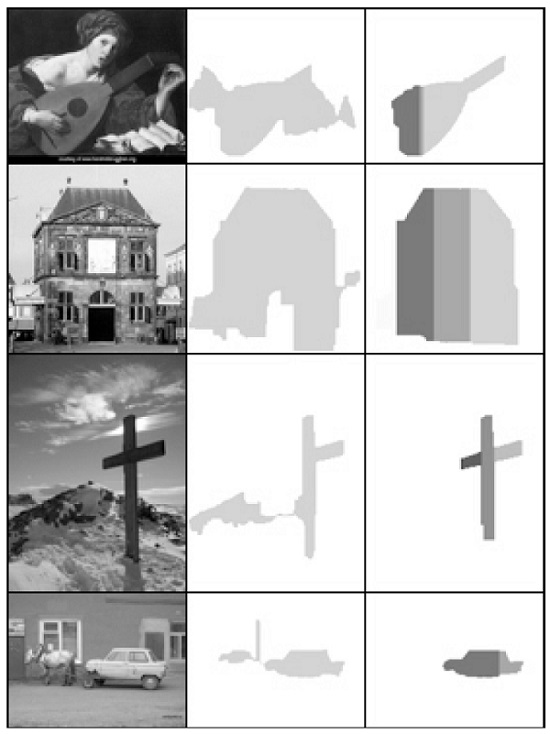Description
Our main technical result is an efficient DP algorithm for finding labelings that satisfy tiered constraints. DP can be used because a tiered labeling can be seen as a path in a large state space. In contrast to currently popular optimization methods, such as graph cuts, we find globally optimal solutions with arbitrary smoothness terms Vpq. In particular, this allows for modeling fairly interesting shape priors for segmentation and will likely have other applications as well. We also outlined several possible generalizations of our algorithm that may be useful in different applications.
The shape priors introduced here are novel and appear to be quite powerful. One direction for future work involves learning shape priors from examples. Learning such models can be done using standard techniques for learning 1D (hidden) Markov models. Discriminative learning from fully labeled examples can be done using structured SVMs .
This would be applicable in the geometric class labeling application. In the case of binary segmentation, discriminative learning from examples that are not pre-segmented into parts can be done using latent structured SVMs.

Segmentation without interaction. Middle column: segmentation without shape prior. Last column: segmentation with shape prior. We used a different prior for each example.
A Quadratic Programming based Cluster Correspondence Projection Algorithm for Fast Point Matching



Reviews
There are no reviews yet.